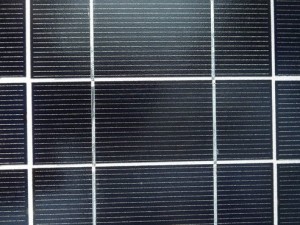
Solar power as service programs are nothing new in the US, at all. Though certainly not available in every state, plenty of companies are in the business of installing and owning solar panels on your roof and you purchasing just the electricity they produce. TreeHugger has covered this countless times.
But in rural India this is definitely a new idea, and Simpa Networks has a twist on the plan: Customers pay for their electricity up front, topping up their accounts using their mobile phones.
Simpa Networks describes what they call a “Progressive Purchase” program:
Our customers make a small initial down payment for a high-quality solar PV system and then pre-pay for the energy service, topping up their systems in small user-defined increments using a mobile phone. Each payment for energy also adds towards the final purchase price. Once fully paid, the system unlocks permanently and produces energy, free and clear.
Currently the program is only available for customers in Karnataka—where Simpa is working with Selco India for installations—but Simpa hopes to take the model to underserved markets across India and the world.
GigaOm provides some more specific details on what customers are getting and what it all costs:
The basic system people are buying is 25-50 watts (enough to charge some CFLs, a mobile phone charger, a small fan or TV); each system costs $200-300, a percentage of which the customer puts down initially; electricity is purchased via pay-as-you-go cards in Rs 50, 100, or 500 increments, on which is a code the customer types into their solar power system, unlocking it (photo below); after 2-3 years the system should be paid off entirely, is unlocked and the customer has free electricity (barring any maintenance costs, of course).

Pricing Model Needs to Mesh With Low, Unpredictable Income
Simpa notes the cost savings that a solar power system can provide to low income households, provided they can afford to get access to one:
Solar home systems have proven to be very desirable to consumers who immediately recognize the health, educational, and income generating benefits. Over the 10 year useful life of a quality SHS households will spend $1500-2000 on kerosene, candles, batteries and phone charging. They are paying more than they need to, because they are poor and because their incomes are low and unpredictable. In our launch market, India, the low income consumer can actually afford a small solar home system only if they could pay for such a system over time, in small, irregular, and user-defined increments. That is, if the pricing model matches the pricing model the are already using for kerosene, candles, batteries, and phone charging.
Simpa has a long way to go to prove this model can work though and is currently raising another $4 million in funding, which will hopefully allow them to reach a break-even point of selling 5,000 solar power systems each year. Right now it’s borrowing money to buy the systems it then sells on—which it has done for 50 customers in the Bangalore area, 8 of whom are nearly done paying off their purchase.
There are roughly 1.6 billion people worldwide with no access to electricity at all, and a further 1 billion where access is unreliable.
(Source)

 Follow
Follow